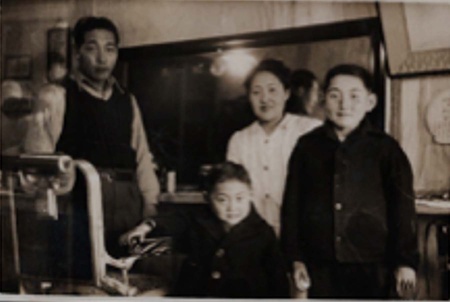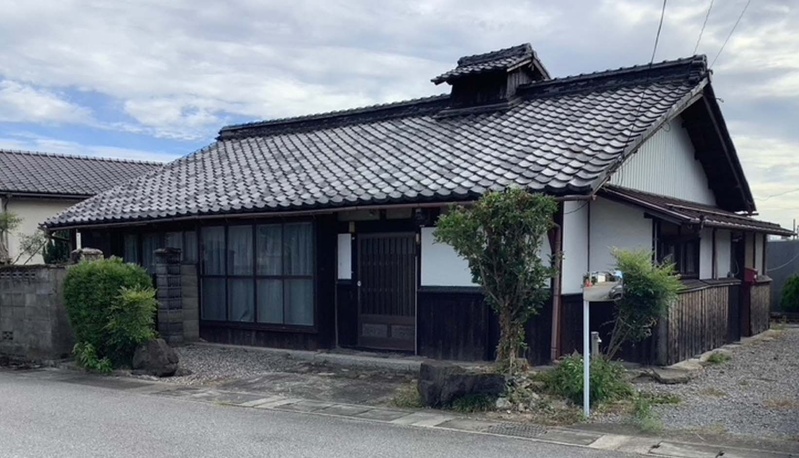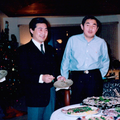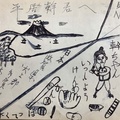Difficult Relations with Relatives
On October 2, 1946, the Hirai family boarded the Marine Falcon, one of three ships chartered by the Canadian government to transport Japanese Canadians to Japan. Miki was two years old and Shig was nine. Shig recalls being seasick every single day of the voyage, and the terrible food they were given after landing at the repatriation center in Uraga. Of the infamous rancid soup given to repatriates at Uraga, he quips, “If you say it was soup, then I guess it was soup!” After about two weeks in Yokosuka, they made the arduous train journey to Tsuchida, their father’s ancestral village near Hikone, Shiga Prefecture.
Miki says, “That’s where the sad story for our family begins.”
Although Hyoshiro’s father had written a letter asking him to come back to Japan, when he did go back, he was shocked to discover that his father’s attitude had completely changed and he was no longer welcome. His father even asked him why he came back. “By then it was too late—he could not return to Canada.”
Shig explains that the prevailing attitude of the locals was, “There is no house for you, and nothing to eat, so why did you come over here?”
From then things only became worse. Hyoshiro’s father decided that, instead of Hyoshiro, his youngest son would take over the family inheritance, despite Hyoshiro being the eldest surviving son. As a result, Hyoshiro did not receive any land or financial support from his father. Economically speaking, he was completely on his own. He even had to buy a rice field from his father in order to provide for the family. Miki explains:
My father had to put up all his savings to pay for a rice field so that our family could have rice although his father had over ten rice fields of his own…My father also had a hatake (small vegetable field) by the house and he looked after that, and my mother helped — whatever she could do, to make a living.
In addition to their other hardships, the family had to live in a small storehouse. Hyoshiro didn’t say much to his sons about this period, but Miki heard a few stories about it from Fujiye. Relations continued to be very strained with Hyoshiro’s parents and relatives. Sometimes the relatives even went so far as to put a board across the outside of the door of the storehouse where they were living so that they could not get out. Miki recalls, “My father was so upset, fighting with his dad all the time.”
Fujiye also didn’t talk in much detail about what it was like for her, or about what kind of relationship she had with her Japanese mother-in-law. But their relationship clearly was not good. She did say later that this period was the worst time of her life. She wondered aloud, “Why did we ever come to Japan? For what?” Miki explains:
That was a big pressure on my dad, because he was the one who had made the decision to go to Japan. My mother told me it was so bad because she was Canadian-born…She (had) never experienced life in Japan, and especially after the war it was so severe. Everybody could hardly eat. So, the idea was to have a farm and grow your own rice and retain whatever you have and eat that...Anyway, life was not good.1
Shig points out that they were extremely fortunate that their mother was a licensed barber. “Everyone needs a barber — that’s what she said. She put up a sign and right away people came.” One resident of Tsuchida recalls seeing her set up a chair in front of the Hirai house and give haircuts to the locals.2
The family continued living in Tsuchida for about one and a half years. However, the relations with Hyoshiro’s family became so strained that he finally realized they needed to move away, so he decided to relocate the family to a neighboring village called Taga.
The Family’s Life in Taga
After moving to Taga they rented space in a house where Fujiye opened a barbershop. As she did not have enough money, she took out a loan guaranteed by her older brother in Canada. The barbershop was in the front part of the house, and the family lived in a small tatami room at the back, about four by five square meters.

Hyoshiro built a tiny kitchen and equipped it with a small oil stove. They had no running water so had to use the wells of their next-door neighbors. They also had no bath but were kindly invited by four different neighbors to use theirs. As there was no toilet they likewise had to use their neighbors’ outhouses. They did have electricity (a necessity for a barbershop). Their relations with their neighbors were very supportive and friendly. Miki recalls, “They all helped each other so much. I didn’t think anything of it. I thought that was normal!”
In addition to setting up her own barbershop, Fujiye taught the owners of the building, Mr. and Mrs. Miyano, how to do barbering and they both became professional barbers.3 While Fujiye ran the barber shop, Hyoshiro continued farming. So, between her barbering and his farming, and with the good will and support of their neighbors, they were able to sustain their family. Miki notes, “Compared to others, we were doing better.”
The next chapter will be about childhood experiences in Taga, Shiga Prefecture in Japan.
Notes:
1. Nikkei Images, p. 8.
2. Personal communication (conversation with an elderly man [name unkown] in Tsuchida who has fond memories of the Hirai family, March 2023)
3. Even after the Hirai family had left for Canada, this couple carried on the barbershop business for many years. Mr. Miyano has passed away, and the wife is in a retirement home, but the building containing the shop was left standing until just a few years ago. When Miki visited the shop (then closed) a few years ago, he was surprised to see a large old Asahi Beer Company mirror that his parents had bought many years ago was still hanging there. “It must have been there for half a century or more.”
Years later, whenever he visited Japan, Miki would stop by the Miyano home to visit. On one such occasion, Mr. Miyano told him that he wished he could thank Miki’s mother, who had already passed away, because if she had not taught them how to barber, they wouldn’t have been able to have that business all their life.
© 2024 Stanley Kirk







